-
CATEGORY ::
- All Seeds /
- All Flower Seeds /
- All Celosia Seeds








Celosia Seeds - Spicata
About...
Celosia (Celosia Spicata Flamingo) - If you like to dry flowers, start Celosia Spicata seeds for a spectacular annual that makes lovely everlasting blooms! This Wheatstraw Celosia features attractive long stems of bi-colored rose and deep pink flower spikes.MORE CELOSIA OPTIONS
Planting Directions
TEMPERATURE
70 - 85F
AVERAGE GERM TIME
14 - 21 days
LIGHT REQUIRED
Yes
DEPTH
Surface sow or cover no more than 1/8th inch maximum
SOWING RATE
3 - 5 seeds per plant
MOISTURE
Keep seeds moist until germination
PLANT SPACING
12 - 15 inches


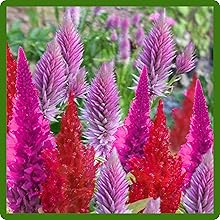





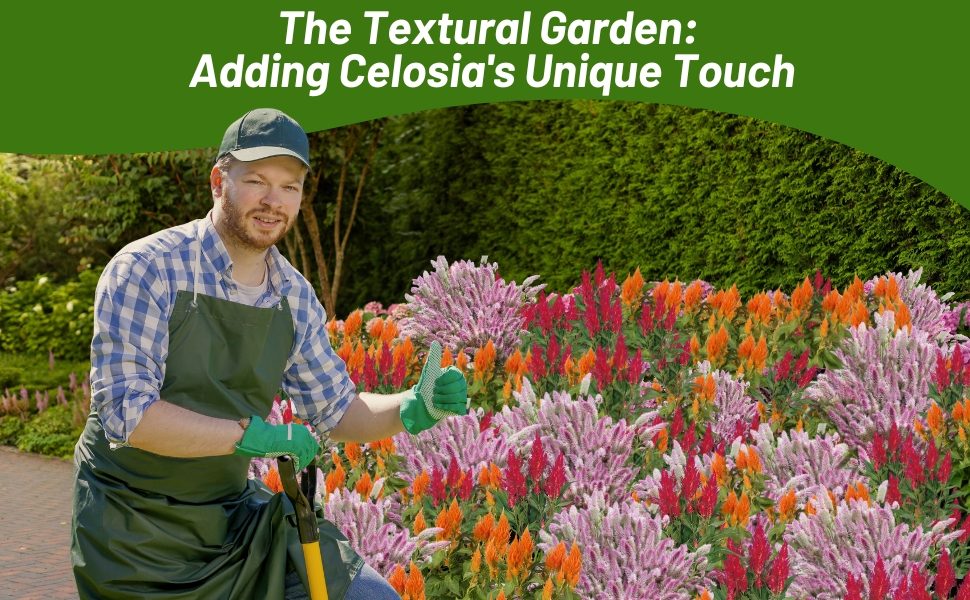
Celosia (Celosia Spicata Flamingo) - If you like to dry flowers, start Celosia Spicata seeds for a spectacular annual that makes lovely everlasting blooms! This flower features attractive long stems of bi-colored rose and deep pink flower spikes.
Common Questions
Is celosia invasive?
No, celosia is not invasive; however, they can reseed in the garden.
Do I need to deadhead my celosia plants?
Regular deadheading will keep your plants looking neat and promote a longer bloom season. Snips off the flowers that have started to droop, turn brown or fade.
Is celosia toxic to animals?
Celosia is not known to be toxic to dogs or other animals.
What season do celosia bloom in?
Celosia is an annual that blooms all summer into fall.
How is celosia used in landscaping?
You can create a vibrant flower bed using various celosia varieties, arranging them at different heights to achieve a stunning rainbow effect with diverse textures and shapes. When grown in containers, these plants tend to stay more compact compared to when they are planted in the ground. For a beautiful border along your garden or yard, mix celosias with other low-maintenance annuals such as zinnias or marigolds. Celosias naturally complement other members of the amaranth family like gomphrena or love-lies-bleeding. Additionally, all tall celosia varieties are perfect for cutting gardens and dry exceptionally well for crafts or arrangements.
Planting Directions
TEMPERATURE
70F
AVERAGE GERM TIME
10 - 15 days
LIGHT REQUIRED
Yes
DEPTH
Do not cover
SOWING RATE
3 - 4 seeds per plant
MOISTURE
Keep moist until germination
PLANT SPACING
6 - 10 inches

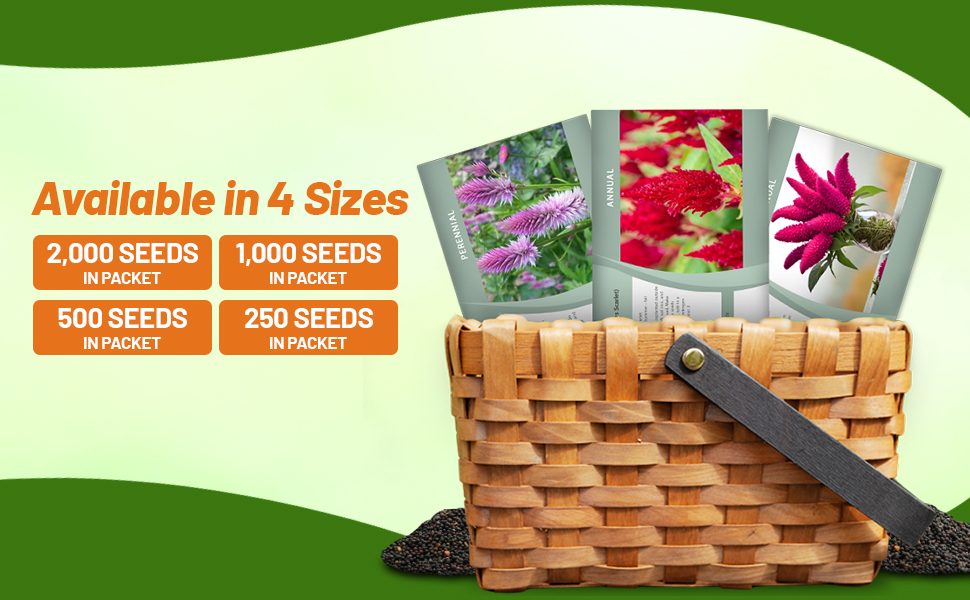



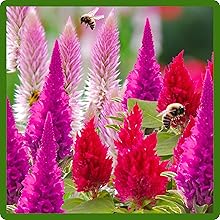



Celosia (Celosia Plumosa Nana Glitters Orange) - Celosia seeds are easy to grow and produce blooms usually within 90 days of starting the flowers seeds! This dwarf variety is excellent in the hot, full sun border and performs wonderfully in hot, humid climates. Celosia is also known as Woolflower and Plume Plant, which are descriptive of the erect feathery, plume-like heads of flowers. This Plume Plant is brilliant orange and gives a dazzling display of color.
Common Questions
Is celosia invasive?
No, celosia is not invasive; however, they can reseed in the garden.
Do I need to deadhead my celosia plants?
Regular deadheading will keep your plants looking neat and promote a longer bloom season. Snips off the flowers that have started to droop, turn brown or fade.
Is celosia toxic to animals?
Celosia is not known to be toxic to dogs or other animals.
What season do celosia bloom in?
Celosia is an annual that blooms all summer into fall.
How is celosia used in landscaping?
You can create a vibrant flower bed using various celosia varieties, arranging them at different heights to achieve a stunning rainbow effect with diverse textures and shapes. When grown in containers, these plants tend to stay more compact compared to when they are planted in the ground. For a beautiful border along your garden or yard, mix celosias with other low-maintenance annuals such as zinnias or marigolds. Celosias naturally complement other members of the amaranth family like gomphrena or love-lies-bleeding. Additionally, all tall celosia varieties are perfect for cutting gardens and dry exceptionally well for crafts or arrangements.
Planting Directions
TEMPERATURE
70F
AVERAGE GERM TIME
10 - 15 days
LIGHT REQUIRED
Yes
DEPTH
Do not cover
SOWING RATE
3 - 4 seeds per plant
MOISTURE
Keep moist until germination
PLANT SPACING
6 - 10 inches

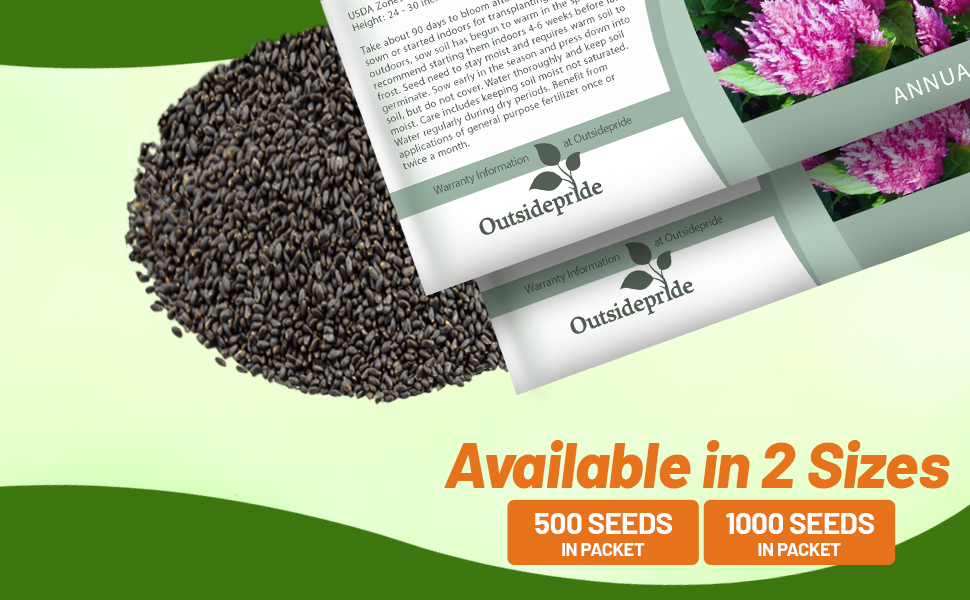




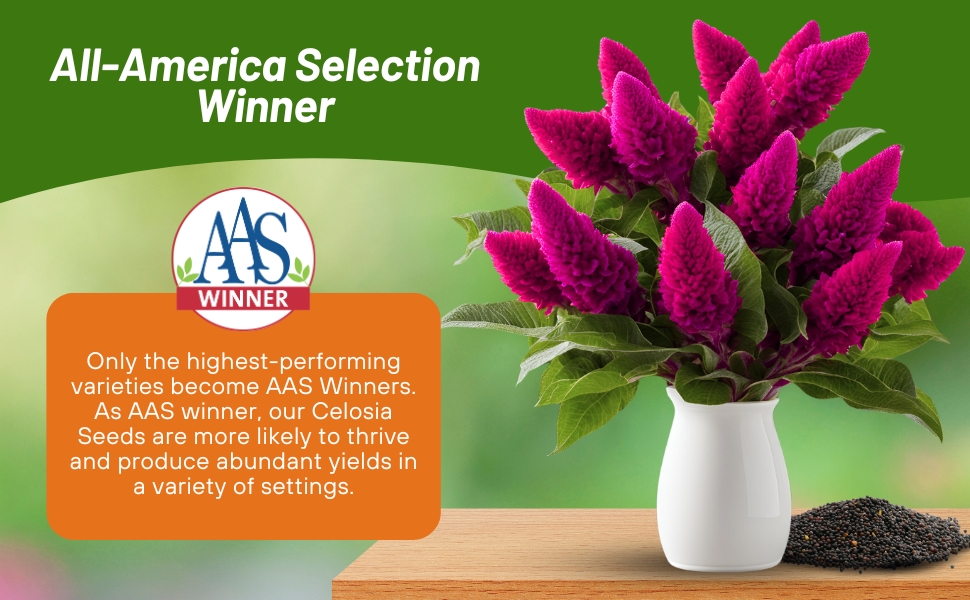

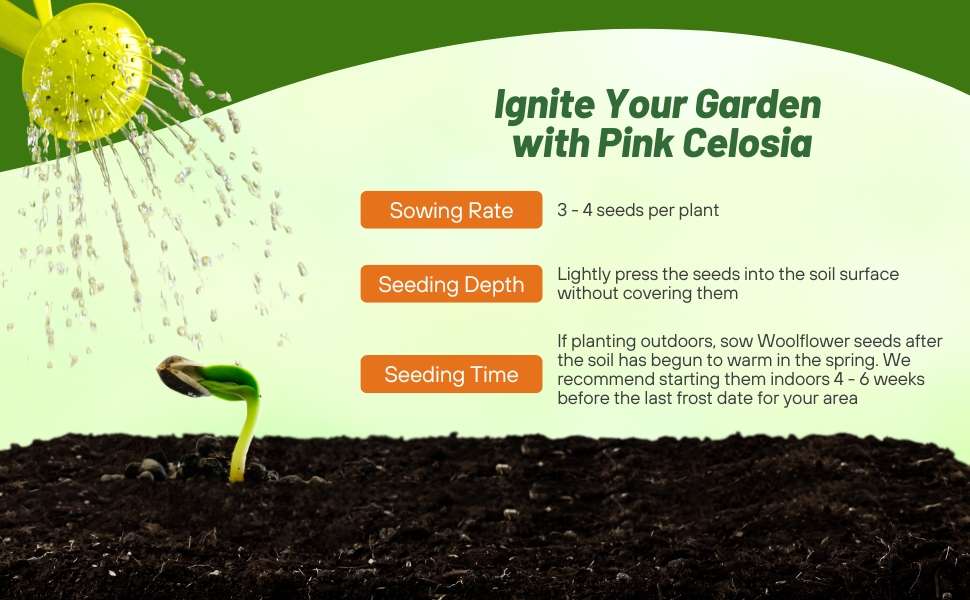
Celosia (Celosia Plumosa Castle Pink) - Planting Celosia seeds is so very fun and rewarding! These dwarf annuals grow and bloom quickly and are perfect in the flower bed, in containers, and even as a house plant. Enjoy this glittering pink variety in your landscape. 1990 AAS Flower Winner. Castle Pink exhibits consistent performance and strong weather tolerance.
Common Questions
Is celosia invasive?
No, celosia is not invasive; however, they can reseed in the garden.
Do I need to deadhead my celosia plants?
Regular deadheading will keep your plants looking neat and promote a longer bloom season. Snips off the flowers that have started to droop, turn brown or fade.
Is celosia toxic to animals?
Celosia is not known to be toxic to dogs or other animals.
What season do celosia bloom in?
Celosia is an annual that blooms all summer into fall.
How is celosia used in landscaping?
You can create a vibrant flower bed using various celosia varieties, arranging them at different heights to achieve a stunning rainbow effect with diverse textures and shapes. When grown in containers, these plants tend to stay more compact compared to when they are planted in the ground. For a beautiful border along your garden or yard, mix celosias with other low-maintenance annuals such as zinnias or marigolds. Celosias naturally complement other members of the amaranth family like gomphrena or love-lies-bleeding. Additionally, all tall celosia varieties are perfect for cutting gardens and dry exceptionally well for crafts or arrangements.
Planting Directions
TEMPERATURE
70F
AVERAGE GERM TIME
10 - 15 days
LIGHT REQUIRED
Yes
DEPTH
Do not cover
SOWING RATE
3 - 4 seeds per plant
MOISTURE
Keep moist until germination
PLANT SPACING
6 - 10 inches


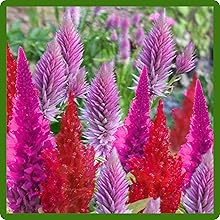





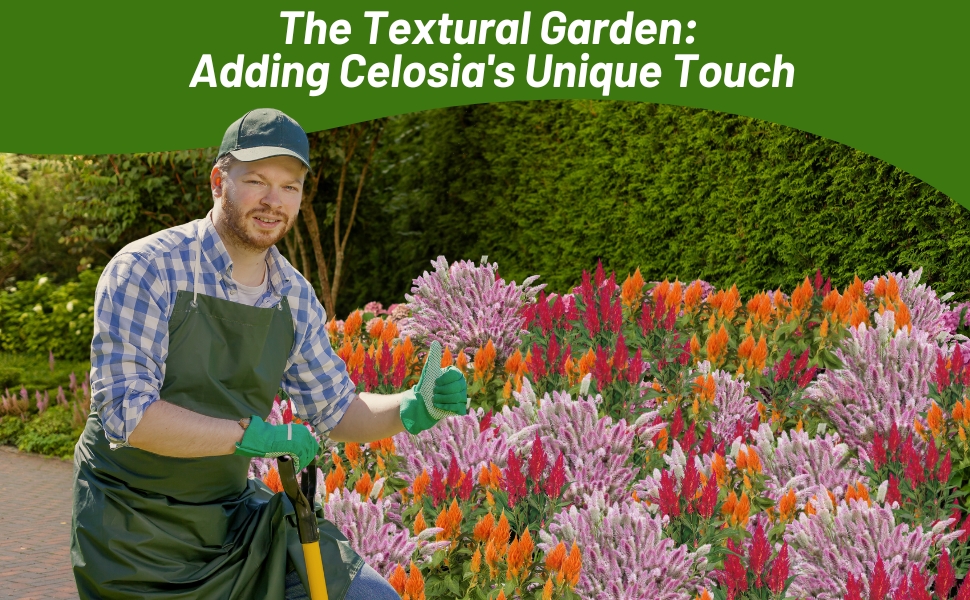
Celosia (Celosia Plumosa Nana Glitters Scarlet) - Celosia is easy to grow from flower seed, and these annuals make a spectacular display for your garden all summer long. This dwarf Celosia plant is lovely in the front of the sunny flower bed or in containers on a sunny deck. Celosia Plumosa has several common names such as Feathered Amaranth, Plume Plant, and Woolflower.
Common Questions
Is celosia invasive?
No, celosia is not invasive; however, they can reseed in the garden.
Do I need to deadhead my celosia plants?
Regular deadheading will keep your plants looking neat and promote a longer bloom season. Snips off the flowers that have started to droop, turn brown or fade.
Is celosia toxic to animals?
Celosia is not known to be toxic to dogs or other animals.
What season do celosia bloom in?
Celosia is an annual that blooms all summer into fall.
How is celosia used in landscaping?
You can create a vibrant flower bed using various celosia varieties, arranging them at different heights to achieve a stunning rainbow effect with diverse textures and shapes. When grown in containers, these plants tend to stay more compact compared to when they are planted in the ground. For a beautiful border along your garden or yard, mix celosias with other low-maintenance annuals such as zinnias or marigolds. Celosias naturally complement other members of the amaranth family like gomphrena or love-lies-bleeding. Additionally, all tall celosia varieties are perfect for cutting gardens and dry exceptionally well for crafts or arrangements.
Planting Directions
TEMPERATURE
70F
AVERAGE GERM TIME
14 - 21 days
LIGHT REQUIRED
Yes
DEPTH
Cover seed lightly with topsoil after sowing
SOWING RATE
2 -3 seeds per plant
MOISTURE
Keep seeds in soil slightly moist but not wet
PLANT SPACING
6 - 10 inches

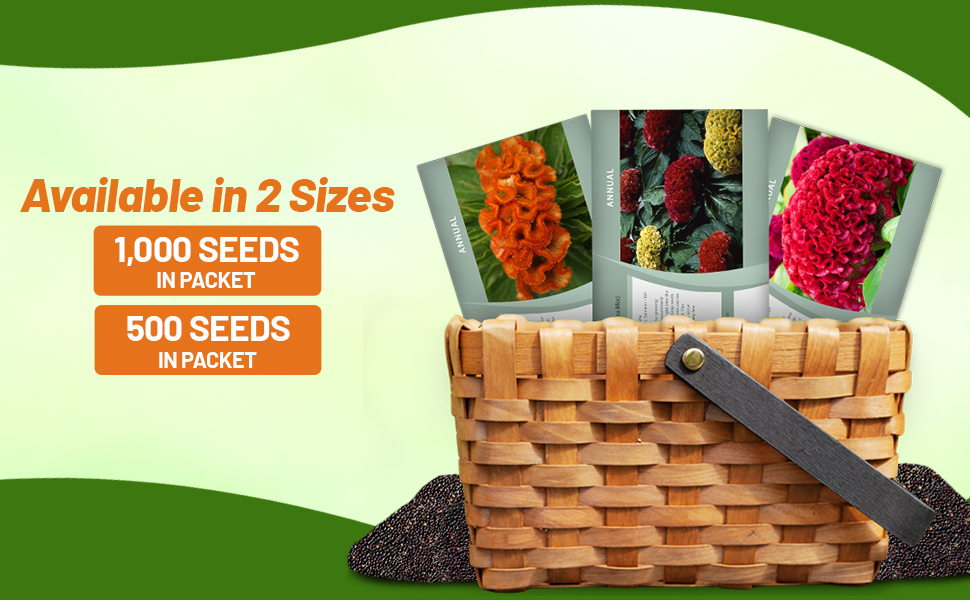





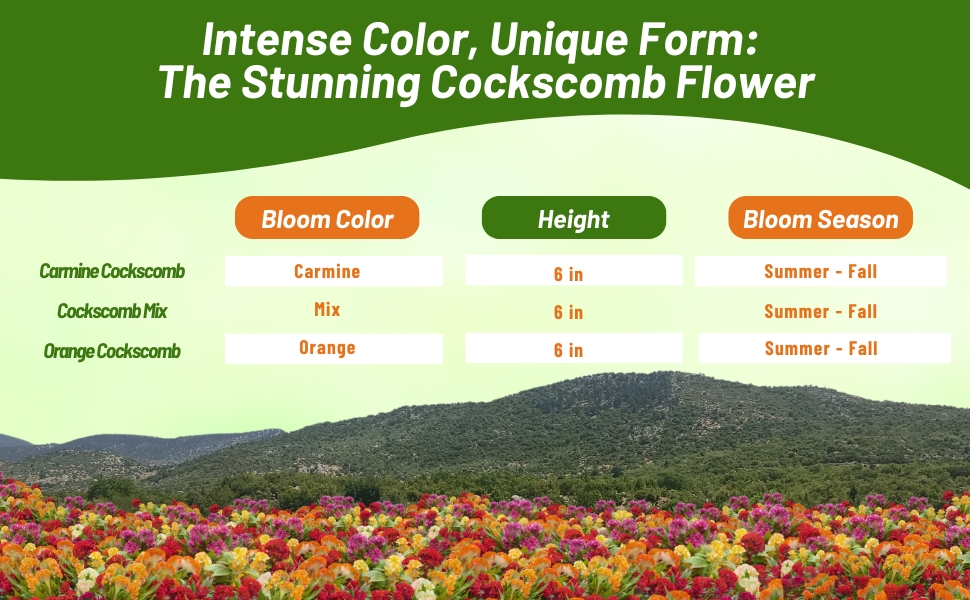

Cockscomb (Celosia Cristata Nana Jessica Carmine) - Start Celosia seeds to bring these exotic looking annuals to the garden! Celosia Cristata Nana is a dwarf, low-growing crested Celosia that is commonly called Cockscomb. The flower is said to resemble a rooster's comb, and it has interesting wavy crests of fused flower stalks. This carmine color is intense and long lasting.
Common Questions
Is celosia deer resistant?
Celosia is rarely bothered by deer; however, if you have a lot of deer and little food they will eat it.
When do I cut the flowers?
Snip your flowers early in the morning when they are fully bloomed. To dry them, remove the leaves and hang them in small bunches in a warm, dry location.
My celosia is having a poor start and not many flowers, can you tell me what happened?
Celosia does not like cool wet weather or wet soil. This can delay flower production.
My celosia is not growing larger, what could the problem be?
If your plants outgrew their small containers indoors before transplanting, they might have developed rootbound. To avoid this issue, refrain from starting seeds too soon and transfer them to larger pots before their final move to the garden.
Is celosia cristata indoor or outdoor?
Celosia Cristata can be grown both indoors and outdoors. When grown indoors, they should be kept in a location that receives plenty of sunlight.
Can celosia survive winter?
Celosia Cristata, being tropical plants, are sensitive to frost and freezing temperatures. In regions with colder climates, they typically wither during winter and require replanting in the spring. Yet, in USDA hardiness zones 10-11, where winters are gentler, they can endure and regrow in the subsequent spring.
How long does celosia plant last?
Celosia Cristata, an annual plant, usually thrives for a single growing season lasting approximately 3 months. Despite this short lifespan, its vibrant flowers can retain their colorful beauty for up to 8 weeks.
Can celosia be an indoor plant?
Celosia, particularly Celosia Cristata, can thrive as an indoor plant. When grown indoors, ensure they are placed in a sunny spot and receive the same care as they would outdoors, such as consistent watering and feeding. If natural light is insufficient, think about using a grow light to support their growth.
Do celosia plants come back every year?
Celosia plants, like Celosia Cristata, are commonly cultivated as annuals worldwide, completing their life cycle within a single growing season and not regrowing annually. Nonetheless, in warmer regions like USDA zones 10-11, they have the potential to persist as perennials, reappearing each year.
Planting Directions
TEMPERATURE
70F
AVERAGE GERM TIME
14 - 21 days
LIGHT REQUIRED
Yes
DEPTH
Cover seed lightly with topsoil after sowing
SOWING RATE
2 -3 seeds per plant
MOISTURE
Keep seeds in soil slightly moist but not wet
PLANT SPACING
6 - 10 inches



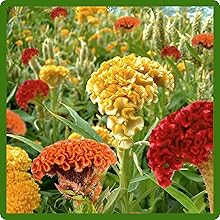





Cockscomb (Celosia Cristata Nana Jessica Mix) - You are sure to have people ask about your flowers when you grow Celosia seeds and plant them in your front border! Celosia Cockscomb flowers are so exotic and brilliant in their color. This mix of flower seeds will produce colors of yellow, orange, and red. Celosia Cristata Nana is a low-growing variety so it's well-suited for the front of the border or containers.
Cockscomb seeds can be started indoors to get a jump start on the growing season. Celosia roots prefer not to be disturbed, so it's recommended to start the flower seeds in peat pots that can be transplanted right into the ground. Press the flower seeds into the soil and lightly cover. Keep the flower seeds moist. For areas with a long growing season, Celosia seeds can be started directly outdoors in a prepared seedbed. The soil must be 60F or warmer for germination to occur. Use a application of a balanced fertilizer every few weeks during the blooming season.
Common Questions
Is celosia deer resistant?
Celosia is rarely bothered by deer; however, if you have a lot of deer and little food they will eat it.
When do I cut the flowers?
Snip your flowers early in the morning when they are fully bloomed. To dry them, remove the leaves and hang them in small bunches in a warm, dry location.
My celosia is having a poor start and not many flowers, can you tell me what happened?
Celosia does not like cool wet weather or wet soil. This can delay flower production.
My celosia is not growing larger, what could the problem be?
If your plants outgrew their small containers indoors before transplanting, they might have developed rootbound. To avoid this issue, refrain from starting seeds too soon and transfer them to larger pots before their final move to the garden.
Is celosia cristata indoor or outdoor?
Celosia Cristata can be grown both indoors and outdoors. When grown indoors, they should be kept in a location that receives plenty of sunlight.
Can celosia survive winter?
Celosia Cristata, being tropical plants, are sensitive to frost and freezing temperatures. In regions with colder climates, they typically wither during winter and require replanting in the spring. Yet, in USDA hardiness zones 10-11, where winters are gentler, they can endure and regrow in the subsequent spring.
How long does celosia plant last?
Celosia Cristata, an annual plant, usually thrives for a single growing season lasting approximately 3 months. Despite this short lifespan, its vibrant flowers can retain their colorful beauty for up to 8 weeks.
Can celosia be an indoor plant?
Celosia, particularly Celosia Cristata, can thrive as an indoor plant. When grown indoors, ensure they are placed in a sunny spot and receive the same care as they would outdoors, such as consistent watering and feeding. If natural light is insufficient, think about using a grow light to support their growth.
Do celosia plants come back every year?
Celosia plants, like Celosia Cristata, are commonly cultivated as annuals worldwide, completing their life cycle within a single growing season and not regrowing annually. Nonetheless, in warmer regions like USDA zones 10-11, they have the potential to persist as perennials, reappearing each year.
































